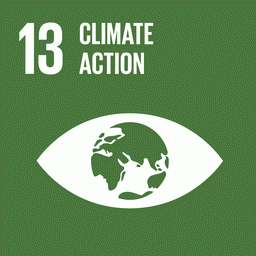To reduce deforestation in the Amazon, it is necessary to implement and strengthen conservation measures not only in public lands – where 51% of total deforestation in the region occurs, as shown in the first episode of the new cycle of Amazoniar – but also in private areas. The Brazilian Forest Code, in place since 2012, allows legal deforestation of up to 20% of the Amazon forest located within private properties. This means that conservation policies in private areas could potentially protect around 11.3 Mha (million hectares) in the Brazilian Amazon.
In the second episode of Amazoniar on solutions to deforestation, André Guimarães, executive director of IPAM (Amazon Environmental Research Institute), explains that economic and tax incentives, as well as technical assistance for agricultural producers, are measures that have proven effective in encouraging conservation in these areas.
“We already have tools that would allow us to use the soil without harming the forest and traditional populations in the Amazon. The challenge is to scale them up,” he explained. “We have modern legislation that obliges forest conservation and allows the creation of payment markets for environmental services. These policies need to be expanded.”
Watch the second episode of Amazoniar:
Economic development depends on standing forests
The conservation of the Amazon is fundamental for the economic development of the region and the country. The forest guarantees the quality of the soil and the stocks of water, besides maintaining the climatic balance – being vital for the continuity of some sectors of the economy, such as agribusiness, which depends on a stable rainfall regime to guarantee its productive capacity.
According to a study published in the scientific journal Nature, the deforestation of the Amazon may result in a so-called “agrosuicide”. The expansion of agricultural frontiers through the removal of native vegetation deregulates the country’s water cycle, which harms food production. It is estimated that, if it continues at the current increasing pace, deforestation could cause agricultural losses of around US$ 1 billion annually by 2050.
Besides, avoiding deforestation is more efficient than restoring degraded areas. “We have already lost approximately one fifth of the vegetation in the Amazon, which today are rural properties. However, a big part of this area has already been abandoned and recovering a forest is expensive,” highlighted Guimarães. Research by Imazon (Instituto do Homem e Meio Ambiente da Amazônia) shows that the cost to reform pasture is up to 72% lower than the cost of opening new areas through deforestation.
Example of incentives
Last Friday (01/13), the National Policy for Payment for Environmental Services (PNPSA) completed two years after its sanction. It consists of an instrument to encourage rural producers and companies that perform environmental services on their properties. Although it is still necessary to implement some measures to regulate PNPSA, there are some examples of projects that have proven the effectiveness of these incentives.
One of them is Conserv, an initiative of IPAM, together with the Woodwell Climate Research Center and the EDF (Environmental Defense Fund). The programme operates in the state of Mato Grosso and provides financial compensation to landowners who conserve native vegetation on their land that could be legally suppressed. To date, Conserv has contributed to the conservation of 14,843 hectares of native forests on private properties in the Brazilian Amazon, which represents 540,635 tons of stored carbon.
About Amazoniar
Amazoniar is an initiative of IPAM to promote a global dialogue about Amazon and its importance for Brazil’s relationships with the world. In the previous cycles, dialogues addressed the commercial relations between Brazil and Europe; the role of indigenous peoples in the region’s sustainable development and their contribution to science and culture; and youth engagement for the forest and its peoples in the 2022 Brazilian elections.
With the proposal of taking the Amazon beyond its borders, Amazoniar has already carried out special projects, such as a photography contest, whose selected photos were exhibited in the streets of Glasgow, in Scotland, during the COP26; a series of short films that composed the exhibition “Fruturos – Amazônia do Amanhã”, at the Museum of Tomorrow, in Rio de Janeiro; as well as a publication with key information to better understand the current Amazon context and some of the possible solutions for its sustainable development.
